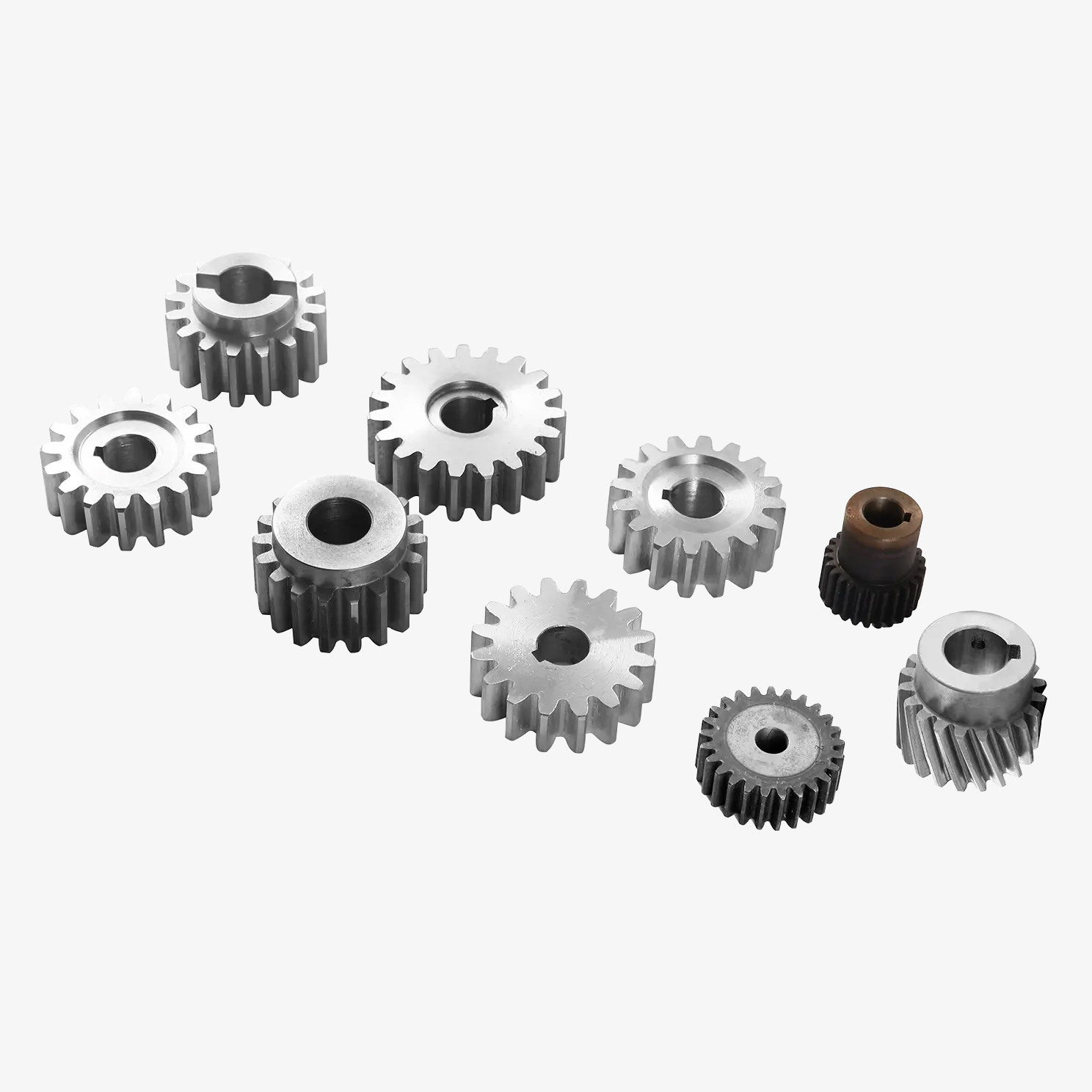No. 200 Gaoxin RD, Shanghua St, Lanxi, Zhejiang, P. R China
The Surface Heat Treatment Rack Pinion Gear is a precision-engineered ...
See DetailsWith the rotation of time gears, my country's industry has become more and more developed, and industrial equipment is gradually updated, but there is no shortage of parts from beginning to end, that is, the gear mentioned at the beginning. You should all know the role of gears, and it is widely used. It ranges from daily necessities such as watches and clocks, automobiles, sewing machines, and CD players to industrial equipment such as food processing machines and machine tools. Now everyone knows the role, so I don’t know if you understand how gear processing manufacturers operate. Next, let me show you the two methods of gear processing!

1. Profiling. The gear machining tool cuts out the tooth space of the gear, and the "cross-sectional shape" of the tool is the shape of the gear tooth space. When gears are processed, there is no gear meshing movement, the precision of the processed gears is low, and the general accuracy is below 11.
2. Fancheng processing. The gear machining tool itself is a "gear or rack", and the gear hob can be "thought of" as a rack, which is a rack-type tool. During processing, there is a "gear meshing" movement between the gear cutter and the processed gear. Gear cutter tooth profile cutting edge, the motion envelopes the tooth profile (tooth surface) of the gear to be machined. It is an ideal involute and has high machining accuracy. Common ones include gear hobbing, gear shaping, and gear shaving (belonging to finishing).
After the above understanding, everyone knows how to process gears. Gears can be large or small, but their role is to connect and drive the operation of the machine, and everyone can see its importance.
Gear racks are critical mechanical components used to convert rotational motion into linear motion, often paired with a pinion gear to achieve this transformation. Among the various materials used for gear rack manufacturing, steel and plastic—particularly nylon—stand out as the commonly employed. Each material type offers distinct advantages and limitations, making the selection dependent on specific application requirements.
Material Composition and Manufacturing
Steel gear racks are typically manufactured from carbon steel, alloy steel, or stainless steel, depending on the intended environment and strength requirements. Heat treatment processes such as carburizing or induction hardening can be applied to enhance surface hardness and wear resistance. The precision machining and finishing of steel gear racks result in high dimensional accuracy and long-term durability.
Plastics nylon gear racks are usually made from engineering-grade nylon such as PA6 or PA66, sometimes reinforced with glass fibers to improve mechanical strength. These gear racks are often injection-molded or machined from extruded plastic stock. Although they can be manufactured to tight tolerances, their dimensional stability can be influenced by temperature and humidity changes due to the hygroscopic nature of nylon.
Load-Bearing Capacity
One of the significant differences between steel gear racks and plastics nylon gear racks is their load-bearing capacity. Steel gear racks are capable of supporting high loads, making them suitable for heavy-duty applications such as machine tools, automation equipment, and lifting systems. Their rigidity and toughness allow them to withstand substantial forces without significant deformation.
In contrast, plastics nylon gear racks are better suited for light- to medium-duty applications. While reinforced nylon variants can handle moderate loads, they cannot match the strength and rigidity of steel. Excessive loading can bring about deformation, wear, or even failure of nylon gear racks, especially in continuous operation or under dynamic stresses.
Wear Resistance and Durability
Steel gear racks exhibit wear resistance, especially when surface hardened. This quality contributes to long service life in demanding conditions. They also maintain their performance over time, even in high-speed or high-frequency operations, where mechanical stress and heat can be significant.
Plastics nylon gear racks offer relatively good wear resistance in clean, dry environments or when lubricated adequately. However, they are more prone to wear and abrasion when exposed to dusty or abrasive conditions. Their durability may be sufficient for intermittent use or in applications where the gear rack is not a critical component subject to constant motion.
Noise and Vibration
In terms of acoustic performance, plastics nylon gear racks have an advantage. The inherent damping properties of nylon reduce noise and vibration during operation. This makes them ideal for applications where silent or low-noise performance is important, such as in office equipment, medical devices, or consumer electronics.
Steel gear racks, on the other hand, generate more noise and vibration, particularly in high-speed or poorly lubricated systems. While this can be mitigated with proper design and materials such as dampers or soundproofing, it remains a consideration for noise-sensitive applications.
Environmental Resistance
Stainless steel gear racks offer high resistance to corrosion and chemical exposure, making them suitable for outdoor, marine, or chemically aggressive environments. However, standard carbon steel gear racks require protective coatings or regular maintenance to prevent corrosion.
Plastics nylon gear racks have resistance to moisture and many chemicals, although their performance may degrade when exposed to solvents or prolonged UV radiation. Additionally, nylon can absorb moisture from the air, causing dimensional changes that may affect accuracy over time.